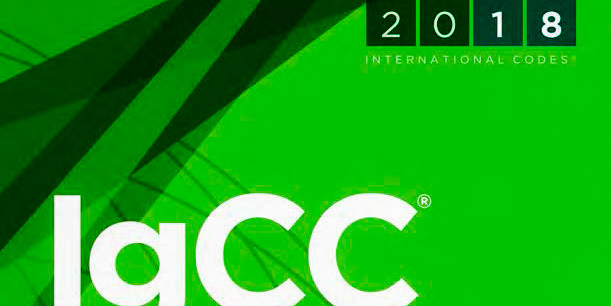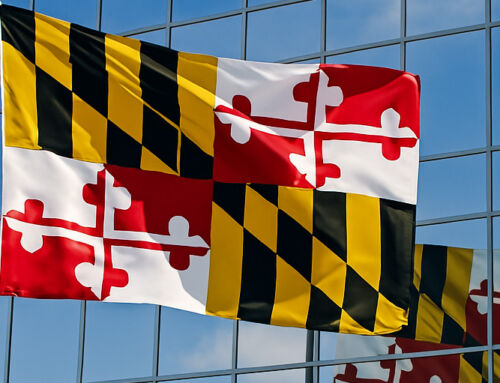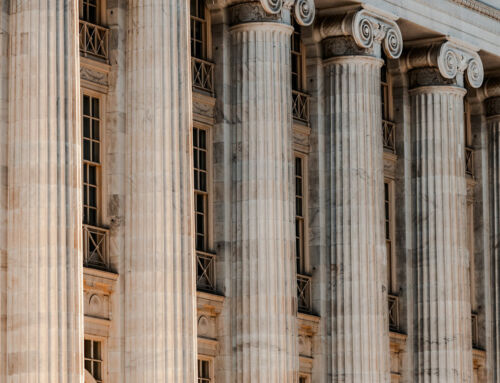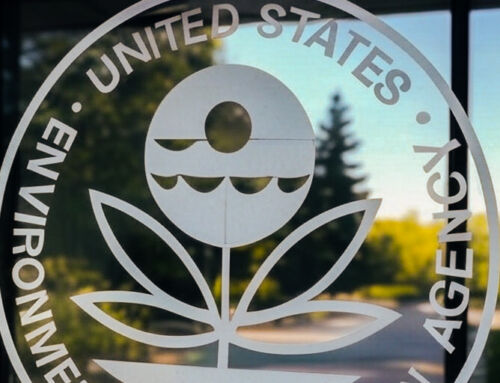View by Topic
Recent Articles
-
President Trump’s Bold Step to Rein in State Overreach in Climate ChangeSaturday, April 12th, 2025
-
Mandatory GHG Disclosures in Maryland Real Estate ContractsSaturday, April 5th, 2025
-
NYC Building Electrification Ruling is Interesting But Not a Game ChangerSaturday, March 29th, 2025
-
Greenpeace Ordered to Pay $667M in Blow to ActivismSaturday, March 22nd, 2025
-
The Most Consequential Day of Environmental Deregulation in American HistorySaturday, March 15th, 2025
View by Month/Year
“Green Building Law Update” Headlines
Recent Articles & News from
Stuart Kaplow’s blog
at GreenBuildingLawUpdate.com
- President Trump’s Bold Step to Rein in State Overreach in Climate Change April 13, 2025
- Mandatory GHG Disclosures in Maryland Real Estate Contracts April 6, 2025
- NYC Building Electrification Ruling is Interesting But Not a Game Changer March 30, 2025
- Greenpeace Ordered to Pay $667M in Legal Blow to Environmental Activism March 23, 2025
Subscribe to the Green Building Law Update!
Stuart Kaplow brings his expertise and extensive experience to the table with his unique digital publication, "Green Building Law Update". Subscribers receive regular updates to keep them informed about important issues surrounding Environmental Law, Green Building & Real Estate Law, as well as the emerging demand for Environmental Social Governance (ESG).
Get fresh content through the lense of Stuart Kaplow's cutting-edge expertise, innovative commentary and insider perspective. Don't miss another issue! Subscribe below.

2018 IgCC Poised to be Adopted for the First Time
Montgomery County, Maryland is on the cusp of being the first to adopt the 2018 International Green Construction Code.
The proposed Executive Regulation 12-20 appeared in the Montgomery County Register on August 1. A public hearing will be held on proposed regulation on September 3. And written comments may be submitted until October 5.
Montgomery County was among the first jurisdictions in the country, in 2008, to adopt a mandatory green building law for private building, requiring most new construction be LEED certified. Delivering a success to the environmental industrial complex through a triumph of method over magic, Montgomery is touted as the county in America with the most LEED building. But apparently not for long.
Since 2017, the 2012 IgCC has been permitted in the County as an alternative to mandatory LEED building. But in what is being described as a requiem to LEED in America, the 2018 IgCC will now be required, but LEED will no longer satisfy the local legal green building mandate in Montgomery County.
Make no mistake, the 203 page document that is the 2018 IgCC, unveiled by the coterie of trade group authors (.. including the USGBC) and available from the ICC for sale to the public (.. click here for a free copy of the IgCC), is an entirely new standard and bears little, if any relationship to earlier IgCC versions.
For a section by section review, see my earlier blog post see, 2018 IgCC – A Fast Paced Deep Dive.
The 2018 IgCC is ideally suited to be edited and revised for use as a voluntary compliance code promoting sustainability and energy efficiency, for specifications in contract documents, for college and professional school textbooks and curricula, and the like, but without significant editing it is not ideal for use in a regulatory setting for the compulsory certification of all buildings and construction materials as green.
The proposed regulation that is an adoption with very only modest editing of the 2018 IgCC form into a compulsory construction code can be accessed at MCER 12-20. County staff anticipates releasing a clean copy of the proposed regulation along with guidance, in the coming days (because the official version is difficult to interpret in that includes all of the text from the to be superseded Executive Regulation 21-15 AMII).
The Council may approve or disapprove of the regulation within 60 days of date it was transmitted, so it is possible that the regulation will be effective October 1, 2020. However, despite that nothing in the proposed regulation so provides, it is clear this is only phase one of a two phase enactment process. Not included in this regulation are any provisions from the IgCC about zoning, water use reduction or regulations of buildings after issuance of a certificate of occupancy because the Department of Permitting Services does not have the authority to regulate those matters through a building code, green or otherwise, without a change in law. That change in law will happen later and then further 2018 IgCC regulations will follow.
Rockville, the city that serves as the County seat separately regulates green building and will have future enactments. In a deep, dark secret, Gaithersburg, another city in the County, the fourth largest in the state, just behind Rockville, actually adopted the 2018 IgCC last year but apparently no building has yet been constructed to the green code.
There is no grandfathering in the new regulation, however, the County DPS will likely permit a 6 month phase because it has been their long standing and accepted policy when transitioning into a new code or code cycle, that projects significantly into the design phase during the regulatory transition period be allowed to apply under the code or regulation. Despite that the real estate community has known this action by county government was coming for nearly two years (.. DPS staffers should be applauded for having candidly discussed this), and sophisticated real estate developers have planned and redesigned building for the dramatic shift, the broader business community has expressed concern that the 2018 IgCC may have a stifling effect on not only new building but also renovations in the County.
Montgomery County is striving to be on the bleeding edge of green building regulation, even at a time when many believe green building in the U.S. has been a victim of COVID-19 and is moribund. Make no mistake, adopted the 2018 IgCC in whole as mandatory building code is much more than merely staying ahead of other local governments when there is no sense of reliability, there has been no testing or pilot anywhere and there appears to be no desire or appetite for this extreme government code. But the progressive County government is poised to enact this new code that nearly all acknowledge has a high risk in increasing renovation (including tenant fit outs) and new construction costs to a point beyond where new construction will simply move outside the County?
While no jurisdiction has yet utilized the 2018 IgCC as a building code, it is important to note that maybe only 17 or so (.. out of 4,400 code enacting jurisdictions) have adopted the 2012 version of the IgCC, and Boulder County may be the only place to adopt the 2015 IgCC, so estimating increased construction cost is speculative at best. The only jurisdiction I am aware has used the 2018 IgCC, at all, is Denver that included it within its voluntary 2018 Denver Green Code housing pilot program as a compliance option with LEED Platinum, Net Zero Energy or Passive House +Non-Energy DGC. Don’t miss that, Denver determined the 2018 IgCC to be an alternative to LEED v4 Platinum!
And while anticipating increased construction cost is suppositional, and of course there is no one homogeneous building type, the increase from a LEED 2009 New Construction Silver certified building to a 2018 IgCC building will be considerable (.. maybe 20% more for a typical suburban 5 story 125,000 sq. ft. office building!).
The County may choose to apply this new regulation to its own County owned building, but the most common government constructed building is a K thru 12 school, which building in accordance with state law must be LEED Silver certifiable, two Green Globes certifiable or constructed to the 2012 IgCC.
Some have suggested a novel coronavirus pandemic is not a good time to adopt a new green code, including mandated indoor air quality specifications that make it not legal to build to now accepted guidance on operating a safe space. In the name of green and without consideration to the health of building occupants, Montgomery County’s new regulations will not permit: Increasing outdoor air ventilation; disabling demand-controlled ventilation; further open minimum outdoor air dampers, as high as 100%, thus eliminating recirculation; improving central air filtration to MERV-13; or keeping systems running longer hours, if possible 24/7; etc.
Should the Montgomery County Council determine this is not the time, that this piecemeal adoption process is not correct, or not be comfortable being the only place in the country to adopt this code, the 2021 IgCC is in the final stages of preparation and will be published the first quarter of 2021. Or the Council could delay approval and alter this regulation (.. to mirror the County government’s own construction) to allow LEED or Green Globes as alternative compliance paths, which each do not preclude the new normal of indoor air quality treatment.
Some may be surprised that Baltimore City, just a few miles to the north, a jurisdiction with a mandatory green building law on the books since 2007 and that has allowed the 2012 IgCC as an alternative compliance path since 2014, is within days of introducing a bill that will adopt the 2018 IgCC amending Chapter 37 of the building code, likely to be effective before the end of the year; possibly beating out Montgomery County as the first jurisdiction to adopt the 2018 IgCC.
Imposing civil penalties or criminalizing the failure of a landowner to satisfy some level of social engineering in constructing a building (.. while obviously not in the same order of magnitude as the penalty of death imposed by the Code of Hammurabi for failure to construct a building properly) raises very real issues including how efficacious a green project will be toward repairing the planet when the owner is only seeking to avoid legal jeopardy.
The ramifications of adopting the IgCC in this longstanding LEED only jurisdiction are of national import having longtime USGBC customers agonizing about the future of a beloved industry innovator as well as the road ahead for the very sector itself. Montgomery County is not only the most populous county in Maryland, it is one of the most progressive jurisdictions in the nation. It has also been ranked by Forbes as the 10th richest in the United States and as such first construction costs may not have major economic implications. Politically, the County is heavily Democrat and the citizens are likely in lockstep with this type of regulation. However, observers fret, if the green luster is off LEED (.. the green building rating system that disrupted markets) there, it will falter elsewhere.









